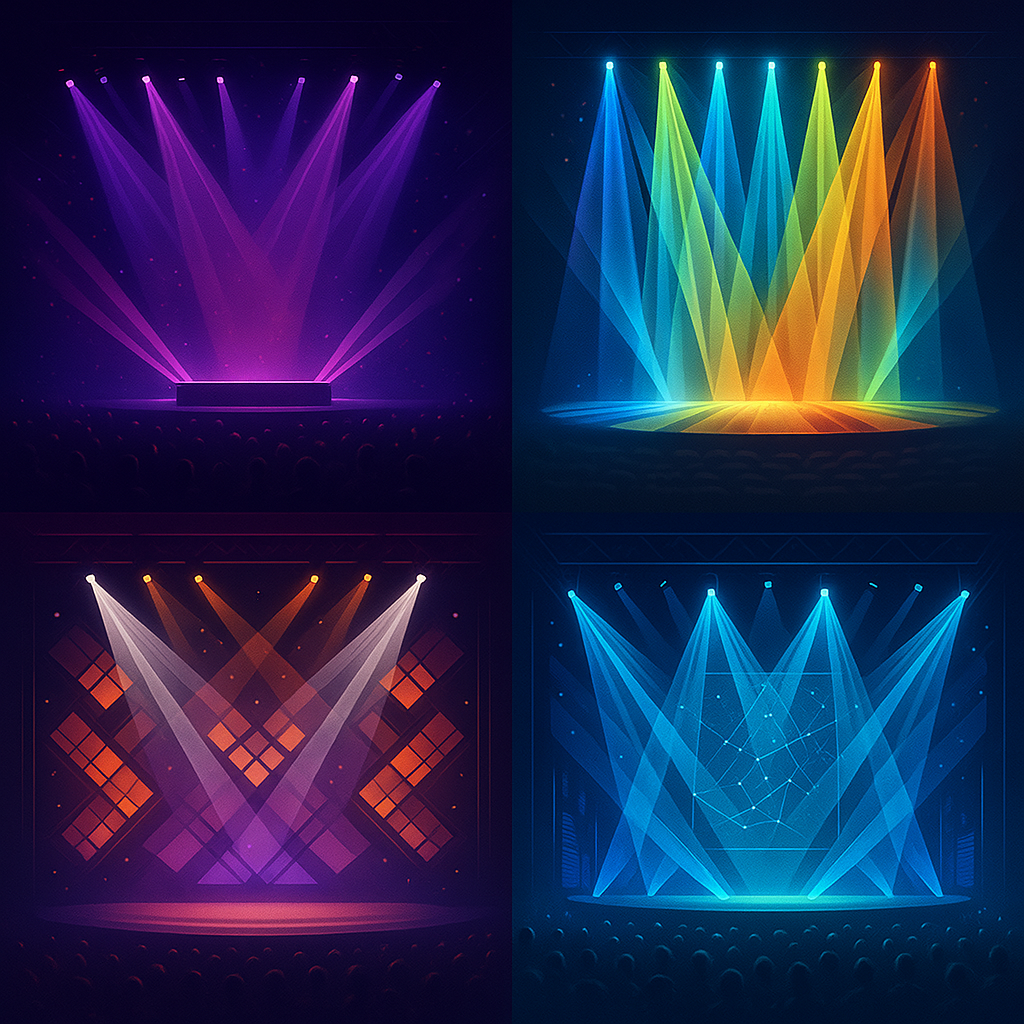Introduction: A New Era of Intelligent Illumination
Artificial Intelligence (AI) is no longer confined to data science, robotics, or finance. It is now a transformative force in the creative industries, including stage lighting design. From adaptive cueing systems to generative lighting visuals, AI is helping artists, engineers, and directors elevate performances through smarter, more responsive technology.
This article explores how AI is reshaping stage lighting—from automation and predictive control to real-time audience analysis—revealing a future where light reacts, learns, and even inspires.
1. Intelligent Cue Programming
Traditional lighting programming is often manual and time-intensive. Designers must align lighting cues with scripts, music, and movement sequences. But now, AI-powered software can:
Analyze scripts and generate basic lighting sequences
Synchronize lighting to music tempo and rhythm
Recommend fixture placement based on venue dimensions
These systems use machine learning to observe user behavior, refine cue accuracy over time, and reduce pre-show preparation hours significantly.
Benefits:
Faster production timelines
Automated show file generation
Fewer human errors in cue timing
AI-assisted consoles are already helping designers achieve more with less time and fewer revisions.
2. Real-Time Response and Adaptation
The next generation of lighting rigs is evolving into reactive ecosystems. Using microphones, cameras, and sensors, AI can interpret external inputs and adapt lighting in real-time. For example:
Live music: Lighting adjusts based on BPM, instrument dynamics, or crowd response
Theater: Facial recognition detects actor positions and enhances follow-spotting
Audience sentiment: Visual effects respond to audience volume or motion
AI-based control systems are able to adjust dimming, beam angles, color palettes, and intensity without manual intervention, ensuring seamless transitions and responsive storytelling.
3. Predictive Maintenance and Fixture Optimization
AI also plays a critical role behind the scenes—especially in fixture health monitoring and failure prevention. By processing data from lighting hardware, AI can:
Predict when a bulb or motor is likely to fail
Alert technicians to overheat risks or abnormal power consumption
Optimize lamp usage to extend lifespan and efficiency
Lighting networks are increasingly built with self-diagnostic firmware, which feeds AI with performance data and enables predictive maintenance schedules, reducing downtime and repair costs.
4. Generative Lighting Design and Creativity
AI is not just a technical assistant—it’s a creative collaborator. Generative design tools now allow AI to:
Produce entire lighting looks based on mood or narrative keywords
Simulate thousands of visual options before choosing optimal ones
Collaborate with human designers to evolve looks across rehearsals
By learning from previous shows and audience reactions, AI can offer personalized effects that enhance engagement without repeating generic presets.
This opens doors to adaptive art, where no two shows are ever quite the same.

5. Integration with Other Smart Systems
AI doesn’t work in isolation. The most impactful lighting systems integrate with:
AI-based sound systems: For synchronizing audio and lighting in real time
Motion tracking systems: For dynamic follow-spotting and ambient shifting
AR/VR control consoles: Allowing designers to program lighting in virtual venues
Such integrations are creating smart stages, where light, sound, movement, and environment are tightly choreographed through AI coordination.
READ MORE:
Products
Contact us





Blue Sea Lighting is an enterprise with rich experience in the integration of industry and trade in stage lighting and stage special effects related equipment. Its products include moving head lights, par lights, wall washer lights, logo gobo projector lights, power distributor, stage effects such as electronic fireworks machines, snow machines, smoke bubble machines, and related accessories such as light clamps.
Quick Links
For more questions subscribe to our email








